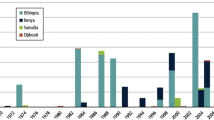Abstract
This paper summarizes the target areas for research which will plug gaps in knowledge concerning the windstorm hazard, and initiatives which will improve preparedness, protection and recovery. Part I refers to strategic planning aspects and Part II outlines the character of windstorm damage, the ingredients of disaster, and a research agenda.
The international character of both the windstorm hazard itself as well as many of the means for mitigating this hazard give the IDNDR, through the UN, unique advantages and opportunities. Among these are: the UN's current involvement with many aspects of the wind storm problem including World Weather Watch and Disaster Relief as well as the UN's accessibility to many Third World development programmes.
Many national and international, governmental, professional and research communities are already hard at work improving the understanding of the wind storm hazard and providing the knowledge base on which advances can be made. This work will continue. The IDNDR will be a catalyst in changing attitudes and in achieving objectives which would otherwise be greatly more difficult.
Similar content being viewed by others
Author information
Authors and Affiliations
Additional information
This paper was presented to the ad hoc Committee of Experts, UN Steering Committee for International Decade for Natural Disaster Reduction (IDNDR) held in Geneva, 6 July 1988. The views expressed are the author's and are not the official views of the UN Steering Committee.




